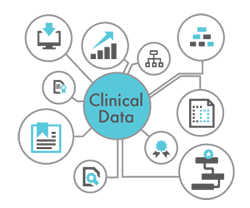 This is the second post from our guest blogger, Julia Pickup, who is lending her unique perspective on outcome measurement, evaluation, and cultures of learning and improvement. Julia is a skilled family therapist and leader of clinicians. This set of posts is named after a common point of resistance I meet when talking with direct service providers about these topics.
This is the second post from our guest blogger, Julia Pickup, who is lending her unique perspective on outcome measurement, evaluation, and cultures of learning and improvement. Julia is a skilled family therapist and leader of clinicians. This set of posts is named after a common point of resistance I meet when talking with direct service providers about these topics.
I often hear, “What we do is an art, not a science.” or “You can’t measure what we do.” I always try to balance these fine points with a few of my own, which you can read more about here and here. Another common point of resistance I hear is, “I got into this business to help people, not to gather and enter data.” Absolutely! You got into this business to help people – but are you? How do you know? What does successful helping look like? Which intervention seems to help the most? That’s what measurement is for! Performance measurement is meant to guide, inform, and improve your clinical work.
For it to come to life in this way, you have to engage your team effectively in conversations about data and what it means, which is what Julia wrote about in her last post. In this post Julia shares three ways she’s seen the use of performance measurement enhance the quality of clinical work, and I threw in a fourth for good measure! Read on . . .
How Performance Measurement Can Provide Clinical Value
1. Refocusing service providers on the big picture.
Clinicians and service providers are consumed with the day-to-day responsibilities of their jobs and the needs of individual clients. It’s easy to get lost in one tough case or to fly high on one rewarding success. Reviewing the big picture through the lens of data at least quarterly can help them reflect on themes and trends. By seeing the big picture, service providers can turn individual lessons learned into knowledge that can inform systematic program improvements.
2. Fostering innovation and adaptation.
In this HBR article, Dr. Stowell and Dr. Ackerman suggest that a focus on measuring outcomes, rather that exclusively looking for fidelity to a model, encourages innovative processes. When one service provider is producing extraordinary outcome results, the rest of the team can look to him/her to learn from those efforts and adapt some of those methods. In this way, the whole team benefits from the learning and successes of its members, and professional development happens organically.
3. Uncovering unmet needs and opportunities for improvement.
Collecting and reflecting on outcomes data can surface and highlight needs and problems that would otherwise go undetected. I [Julia] will draw from another practical example here. A few years ago my team was noticing that many clients were regressing immediately before discharge, according to their scores on our standardized post-test measure. However, the progress notes were showing that the clients had gained several practical skills; the treatment plan reflected that the family achieved all of their stated goals; the clients reported being highly satisfied with services in their feedback survey; and the therapist rated the families’ progress as substantial. But the outcome data was telling us something we couldn’t ignore. Clients’ stress skyrocketed toward the end of service and obscured all their other gains.
Through reflection and discussion, we determined that the problem was about saying good-bye. Despite all their progress, families were nervous about losing our support. So we worked on it. We implemented best practices for terminating therapy, and the therapists began discussing autonomy very early in services. The therapists had to adjust how they approached their role in order to ensure the clients had the best possible outcomes. Were it not for our data, we wouldn’t have detected our clients’ need and this opportunity for improvement.
4. Facilitating client self-reflection.
[Sarah, here. Throwing in my two cents.] We all know that we behave differently when we know we are being measured or observed. In fact, that’s a major source of error in measurement. But in clinical work, two key drivers of change are goal-setting and progress monitoring. If we require our clients to spend their time completing our assessments and surveys, we can at least use that data to provide feedback to our clients, to guide discussions of progress, and to inform our interventions. By using data to show discouraged clients how far they’ve come, to show skeptical or reluctant clients what other families have been able to achieve, and by comparing the story in the data to the story the client feels, we can use measurement as intervention.
The Bottom Line
When driven by intrinsic motivation, informed by the needs and perspectives of service providers, and shared in relevant and engaging ways with staff and clients, performance measurement data can not just satisfy funders or executives but also add value to your front line service providers and improve the quality of their interventions!
